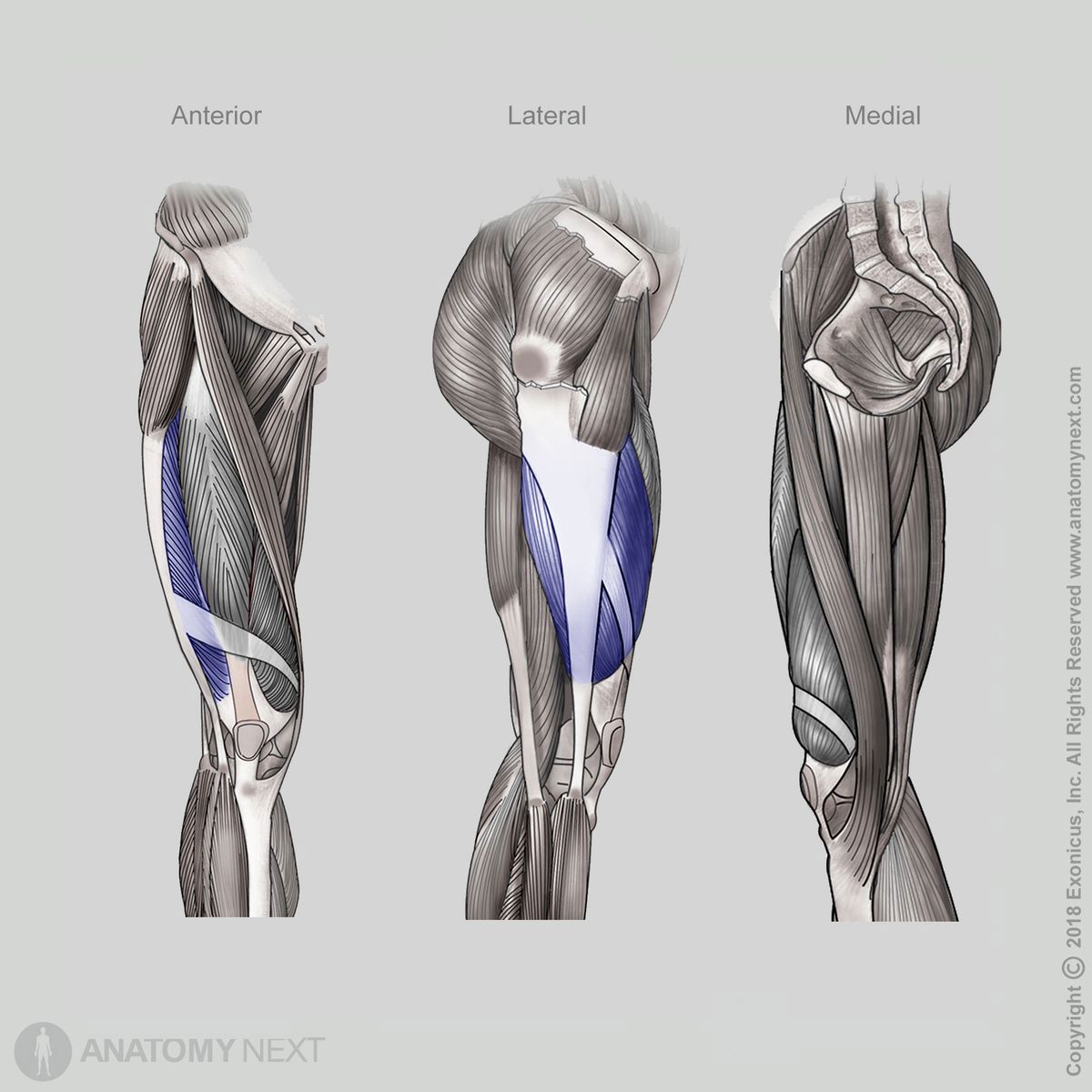- Anatomical terminology
- Skeletal system
- Joints
- Muscles
- Head muscles
- Neck muscles
- Muscles of upper limb
- Thoracic muscles
- Muscles of back
- Muscles of lower limb
- Pelvic muscles
- Muscles of thigh
- Anterior compartment
- Medial compartment
- Posterior compartment
- Muscles of leg
- Muscles of foot
- Heart
- Blood vessels
- Lymphatic system
- Nervous system
- Respiratory system
- Digestive system
- Urinary system
- Female reproductive system
- Male reproductive system
- Endocrine glands
- Eye
- Ear
Vastus lateralis
The vastus lateralis (Latin: musculus vastus lateralis) is one of four muscles that form the quadriceps femoris muscle. It is situated on the lateral side in the anterior compartment of the thigh, and therefore, it belongs to the thigh muscle group. The vastus lateralis is the largest of the quadriceps femoris muscles. It stretches between the femur, patella and tibia.
| Vastus lateralis | |
| Origin | Upper part of intertrochanteric line, greater trochanter, superior aspect of lateral lip of linea aspera, gluteal tuberosity |
| Insertion | Tibial tuberosity via patellar ligament, lateral aspect of patella |
| Action | Leg extension |
| Innervation | Femoral nerve (L2 - L4) |
| Blood supply | Lateral circumflex femoral and deep femoral arteries |

Origin
The vastus lateralis originates from the greater trochanter, upper part of the intertrochanteric line, superior aspect of the lateral lip of the linea aspera and gluteal tuberosity of the femur.

Insertion
Along with other muscles of the quadriceps femoris, the vastus lateralis inserts on the tibial tuberosity via the patellar ligament. Also, it attaches to the lateral aspect of the patella.
Action
The vastus lateralis provides the extension of the leg at the knee joint.
Innervation
The vastus lateralis is innervated by the muscular branches of the femoral nerve (L2 - L4) that arises from the lumbar plexus.
Blood supply
The vastus lateralis receives arterial blood supply from the ascending, transverse and descending branches of the lateral circumflex femoral artery and perforating branches of the deep femoral artery.